This specific chart shows a fascinating periodicity similar to the periodic table devised by Mendeleev. It displays the relationship between the spectral class, age, and mass of a star, revealing patterns and predictability. The Main Sequence, which is the most prevalent regularity, demonstrates that as a star’s mass decreases, so does its temperature and volume. However, the Hertzsprung-Russell diagram does not illustrate another crucial characteristic of stars: the longer a star will burn, the lower its temperature. Additionally, the long degeneracy of stars within the known spectral classes can give rise to peculiar objects known as “hypothetical” stars. These stars have not yet formed due to the relatively young age of the Universe. Nevertheless, theoretical descriptions of such stars already exist, and I will discuss the most intriguing ones below.
Descendants of Red Dwarfs: Blue Dwarfs
The Universe is teeming with Red dwarfs, which are stars classified as spectral class M. In fact, the majority of stars in proximity to our Sun are Red dwarfs (out of the 50 closest stars, the Sun ranks as the fourth largest). In recent years, interest in Red dwarfs has surged, primarily due to the discovery of the TRAPPIST-1 system, a dim and cold Red dwarf that harbors seven closely-packed planets. At least three of these planets are believed to reside within the star’s habitable zone.
Red dwarfs reach the end of the Main Sequence. Their progression can presently only be simulated, but calculations conducted by Peter Bodenheimer from the University of California at Berkeley propose that red dwarfs could have durations of numerous trillion years. Simultaneously, during its lifespan, a red dwarf emits light consistently and continuously, due to convection – the blending of substance – happening in the complete magnitude of this celestial body.
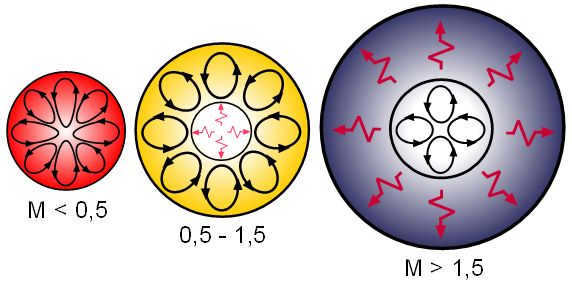
The convection process in a red dwarf star can last for approximately 6 trillion years, allowing the star to deplete a significant portion of its hydrogen reserves. According to Bodenheimer’s hypothesis, instead of transforming into red giants, the smallest red dwarfs will retain their compactness and undergo a phase of re-ignition, transitioning into blue dwarfs.
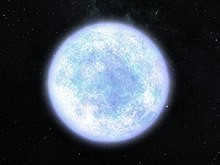
The temperature of this type of star will be higher than that of our Sun, but its brightness will still be very low. In order for a red dwarf to become a red giant, it must have a mass of at least 0.25 M☉ (the mass of the Sun). Smaller stars will transform into blue dwarfs. The tiniest red dwarfs we know of have a mass of around 0.08 M☉ and can undergo fusion for up to 12 trillion years.
It is predicted that in approximately 800 billion years, there will be no stars that are larger than 0.3 M in the Universe☉, and the majority of them will be classified as blue dwarfs. Additionally, the lifespan of these stars will be extended further due to an increase in their metallicity. The presence of metal acts as a sort of cushion, preventing the loss of stellar energy and thus prolonging the star’s lifespan. By the end of the first trillion years, it is likely that all galaxies existing at that time will have a bluish tint as they will be populated by blue dwarfs.
Black dwarfs: the offspring of white dwarfs.
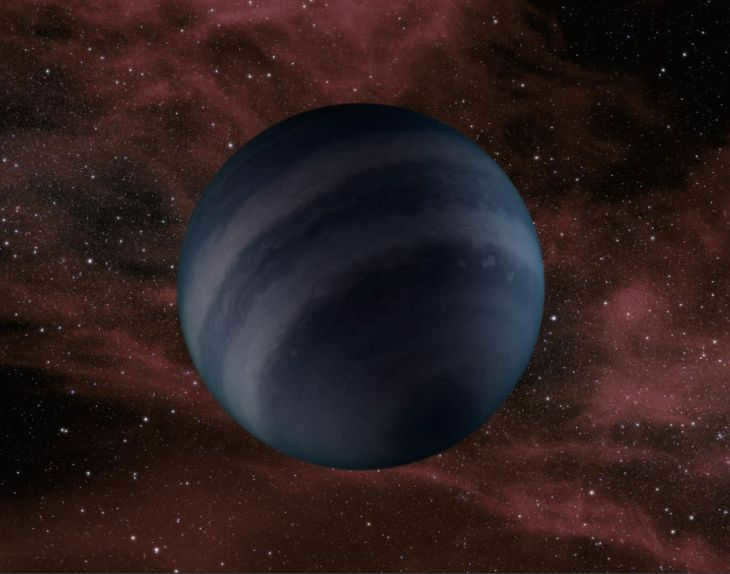
Located at the lower end of the Hertzsprung-Russell diagram are a series of dwarf stars. These stars are formed when a red giant star gradually sheds its outer layers. Unlike other stars, nuclear reactions do not occur within white dwarfs. Instead, they are composed of slowly cooling, glowing plasma. It is estimated that a white dwarf will exist in this state for approximately 10 trillion years before its surface stops emitting visible light. At that point, the star will no longer be visible through a telescope, but it will still retain its gravitational influence, making it a hidden but significant object in space.
Blitzar: The Offspring of a Neutron Star
Hypothetical in nature, blitzars are celestial entities that have the potential to elucidate the enigma behind fast radio bursts (FRBs), which were first detected in 2011. Our previous articles on Habra have shed light on blitzars, but let me briefly recapitulate the crux of this remarkable phenomenon.
The Oppenheimer-Volkov limit in physics refers to the maximum mass at which a neutron star does not undergo a transformation into a black hole. This limit is calculated without considering the inherent rotation found in many neutron stars, which is inherited from their parent star. The presence of centrifugal force resulting from this rotation prevents the star from “falling” into the black hole, allowing the neutron star to exist above the Oppenheimer-Volkov limit for a certain period of time. During this period, the star generates a strong magnetic field that causes the disappearance of the accretion disk surrounding it. Consequently, when a neutron star crosses the event horizon, no matter is expelled from it, but only a powerful magnetic field, which can be detected as a fast radio burst.
The Thorne-Zhitkov object: a product of the union between a red giant and a neutron star
In 1977, Kip Thorne and Anna Zhitkov proposed a theoretical object that could form if a neutron star were to be absorbed by a red giant. This peculiar star would exhibit unique characteristics, including high concentrations of lithium, molybdenum, and rubidium. The concept of giant stars with a neutron core was initially suggested by Lev Landau as far back as 1938, which is why this object is sometimes referred to as the Thorne-Zhitkov-Landau object. It is believed that these stars may originate from the merging of binary star systems, consisting of a red giant and a neutron star. However, such an object would be inherently unstable and could eventually collapse into a black hole or form a binary star system, with the neutron star and pulsar orbiting around a common center of mass.
Thorne-Zhitkov objects have not been found in reality yet. It is likely that if such a star exists, it would resemble a red supergiant with distinctive spectral lines.
The enigmatic frozen star
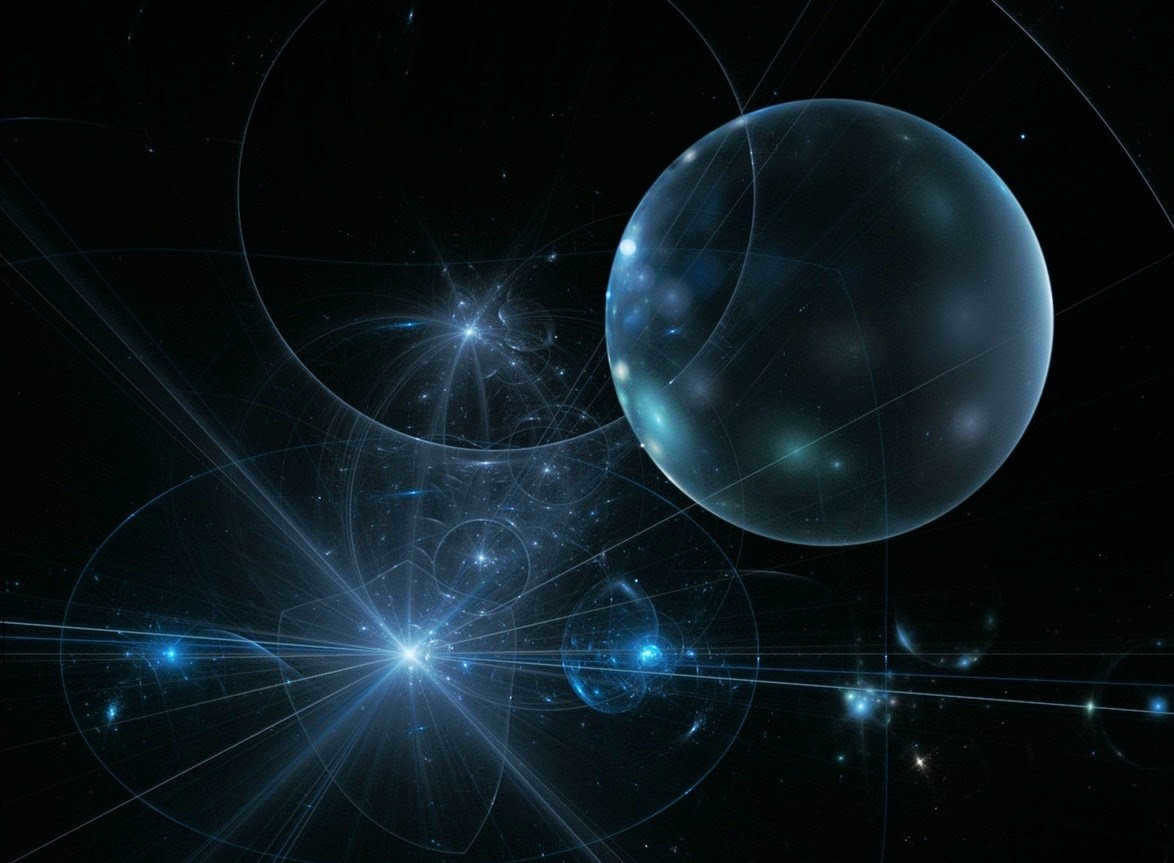
In a groundbreaking paper published in 1979, Freeman Dyson proposed a fascinating theory about the future fate of small stars, particularly white dwarfs. According to Dyson’s hypothesis, these stars would eventually undergo a transformation, ultimately becoming stellar-mass objects made entirely of iron. This transformation is believed to occur through a series of fission and fusion reactions involving light nuclei. Scientists speculate that in approximately 10 1500 years, the majority of luminous stars will have transitioned into solid blocks of cold, cooling iron. Furthermore, it is theorized that these iron stars may eventually evolve into the last generation of neutron stars.
Conclusion
All the mentioned changes, which serve as small steps towards the eventual heat death of the Universe, are projections based on the Hertzsprung-Russell diagram and do not consider another hypothetical process. This process involves the decay of protons, where they spontaneously transform into lighter subatomic particles. This phenomenon is not contradictory to known particle physics, but has not yet been observed. The Kamiokande project in Japan was established with the goal of detecting the decay of a single proton. To accomplish this, mines near the town of Kamioka were converted into large water reservoirs equipped with detectors. Despite the passage of forty years, not a single proton in all that water has decayed. As a result, Kamiokande has become one of the largest and most successful neutrino detectors – but that is a different story altogether.
Maybe the demise of protons will ultimately lead to the demise of iron stars, as they gradually decay. Alternatively, in the final stages of its existence, the Universe might give rise to new forms of matter. I trust that in this article I have not overlooked any intriguing entities that can be derived from the Hertzsprung-Russell diagram but have yet to be substantiated.
It is worth mentioning that all entities in this category are relatively small in size, although they may vary in other attributes. As a result, dwarf stars have been classified into different types and subtypes.
What is the name given to yellow dwarf stars?
Yellow dwarf stars, also known as G-type main-sequence stars, are a type of stellar bodies. These stars are estimated to have a mass between 0.8 and 1.2 times that of the Sun. Once all the hydrogen in a yellow dwarf star is consumed, it undergoes expansion and transforms into a red giant.
Orange dwarf stars
An alternative category of small-sized main sequence stars with a spectral class K. These stars have a mass that ranges from 0.5 to 0.8 times the mass of the Sun, and they have a longer lifespan compared to our primary star. It can be said that the orange dwarf stars are situated between the yellow and red stars in terms of their characteristics.
Red dwarf stars
A red dwarf star is a type of small celestial body with a low mass. This means that red dwarfs have low temperatures and emit a weak level of light. Consequently, they cannot be seen from Earth without the aid of special instruments. On the Hertzsprung-Russell diagram, red dwarf stars are located at the very bottom. They primarily belong to the late spectral class, most commonly classified as class M. Interestingly, our Milky Way galaxy is abundant in red dwarf stars, which astronomers estimate make up to 80% of all astronomical bodies within our galactic system.
One example of a red dwarf star is Proxima Centauri.
Brown representatives
Finally, a brown dwarf is a dimly glowing star (T-class). Due to their low initial mass during formation, nuclear reactions do not occur within them. In fact, brown luminaries are extremely cold entities. Scientists believe that there are thermonuclear fusion reactions taking place within them, resulting in the synthesis of light elements such as lithium, boron, and beryllium. However, the heat release is minimal, causing the nuclear processes to eventually cease. Consequently, the celestial body rapidly cools down and transforms into planet-like objects.
Actually, a black dwarf is a tiny frigid celestial body that lacks any nuclear reactions. This can be due to insufficient mass for such processes to occur or because all of the fuel in the core has been depleted, causing them to extinguish. In the latter scenario, they are known as deceased or lifeless stellar entities.
Furthermore, there are sub-brown or brown subdwarfs, which have a lower mass compared to brown dwarfs. Additionally, they are completely devoid of heat as they exist in the cold expanse of space.
They are often categorized as planets.
What are white dwarfs?
White dwarfs are celestial objects where the pressure of the degenerate gas is precisely balanced by the force of gravity. The density of matter in these stars is sufficient to generate the necessary pressure, while their size contributes to the appropriate density. It is a perfect harmony of factors!
Although the temperature of white dwarfs observed through telescopes is not absolute zero, it is still significantly high. For instance, Sirius B, a white dwarf, is heated to a scorching 10,000 degrees. However, when comparing the thermal energy associated with this temperature to the energy of degeneracy, it is like a drop in the ocean. As a result, the equations developed for completely cold matter effectively describe white dwarfs.
Furthermore, Chandrasekar came to an additional significant conclusion. The crux of the matter is that the pressure exerted by a degenerate gas comprised of protons and electrons cannot continue to increase indefinitely. At some point, it will be unable to withstand the force of gravity. This requires gravity to surpass a specific threshold. In order for this to occur, the star’s mass must surpass a critical value – after all, it is the mass of the star that generates gravity!
The deduction was straightforward: there must exist a mass limitation for a white dwarf. Chandrasekar computed the precise value of this mass limit, which is now referred to as the Chandrasekar Limit.
If the white dwarf is composed of helium, it is found to be 1.4 solar masses. Chandrasekar’s research had a significant impact by providing an explanation for the existence of a specific class of stars and giving them a defined place in the stellar sequence. According to Chandrasekar’s work, white dwarfs are stars that have depleted their energy sources and reached the final stage of their life cycle.
It should be noted that not all stars undergo the white dwarf phase after their “death.” More massive stars can instead become neutron stars or even black holes.
However, it is important to mention that these statements do not apply to all types of stars. Some stars are too large to physically collapse into white dwarfs and instead leave behind neutron stars or black holes. These findings, however, were made at a later time.
Compilation of information for the website starcatalog.ru was done using open sources from the Internet and references from the book “Enigmas for connoisseurs” by Pavel Rafaelovich Amnuel.
Exploring White Dwarfs
These celestial formations lack thermonuclear energy sources, resulting in their faint emission of light. They possess a mass similar to that of the Sun, but have a radius comparable to that of planet Earth. White dwarfs make up approximately 3-10% of all stars. Over time, these stars gradually cool down and transition to a red hue.
Among the initial discoveries of this type of star were 40 Eridana B, Procyon B, and Sirius B.
What is the process of white dwarf formation? When a star’s core
consumes all of its hydrogen, the core contracts and the outer layers expand.
Over time, it fades and transforms into a red giant, eventually shedding its outer layers.
the outer layers
There are two main classes of white dwarf stars. The most common
is the DA spectral class, which consists of white dwarfs with hydrogen, and the DB type, which consists of helium white dwarfs.
In addition to these types of stars, there are also
blue, black, brown, and sub-brown dwarfs.
Design
The MC 20-01 is a unique shotgun with a single barrel and a magazine feed system. It features a longitudinally sliding bolt action, giving it the appearance and ergonomics of a rifled carbine. Unlike other shotguns, the MC 20-01 has a plastic stock made from birch wood, providing a unique and stylish look. Additionally, the stock now serves as a steel receiver instead of just a supporting body. To ensure stability during firing, the barrel is securely fixed in the stock using a dowel, preventing any shifting of parts.
The bolt has been completely disassembled now, without the need for any tools. It secures the barrel in place by rotating the bolt, utilizing two locking lugs. The MC 20-01 is equipped with “rifle-type” front and rear sights.
As an added option, you have the ability to purchase an extended magazine that can hold up to four cartridges. Additionally, one more cartridge can be directly loaded into the chamber, making this shotgun capable of holding three or five rounds.
The fundamental design is regarded as the prototype for “commercial” 20 caliber ammunition (15-16 mm). There are also variations for “furry” 28 caliber (13-14 mm) and “teenage” 32 caliber (12-13 mm). Originally, the shotgun was created for utilization with paper or plastic cartridges exclusively. Subsequently, the receiver underwent modifications to prevent a cartridge with a metal casing from colliding with the chamber or the bolt locking lug.
Responses to inquiries
- The distinction between a white dwarf and a pulsar is that, while both are neutron stars, the pulsar rotates at an incredibly fast rate, sometimes dozens of times per second, whereas the white dwarf, exemplified by star 40 Eri B, has a rotation period of 5 hours and 17 minutes. This difference is quite noticeable!
- What causes white dwarfs to emit light? Despite the absence of thermonuclear reactions, white dwarfs still emit light due to the release of thermal energy. It is similar to the slow cooling process of red-hot iron, starting off as bright white and gradually turning red. The evolved gas effectively conducts heat from the core, resulting in a cooling rate of 1% over hundreds of millions of years. This cooling process slows down over time, allowing white dwarfs to emit light for trillions of years.
- What is the fate of white dwarfs? The universe is not yet old enough for black dwarfs, the ultimate stage of evolution, to exist. Therefore, there is currently no visible evidence of their existence. However, through calculations of their cooling process, we do know one thing – their lifespan is incredibly long, surpassing the age of the universe (13.7 billion years) and potentially extending into trillions of years.
- Are there any white dwarfs with magnetic fields as strong as neutron stars? Some white dwarfs actually have magnetic fields that are much more powerful than anything we can create on Earth. To put it in perspective, the magnetic field strength at the surface of the Earth is only about 30 to 60 millionths of a tesla, while a white dwarf can have a magnetic field strength of up to 100,000 tesla. However, neutron stars take the prize when it comes to magnetic fields, with a field strength of around 10^11 tesla, earning them the name “magnetars”! In some magnetars, shockwaves can form on the surface, causing oscillations within the star. These oscillations often lead to massive gamma ray emissions. One example is the magnetar SGR 1900+14, located 20,000 light years away in the Eagle constellation. On August 27, 1998, it experienced a powerful gamma ray burst that was so intense, it caused the NEAR Shoemaker spacecraft to shut down its equipment to protect it.
Our article features a popular science film that focuses on the remarkable heroes.
Chapter 3: Astrolike at the First Level
White dwarfs are created by nature as stars reach the final stage of their active lifespan. Hence, it is essential to start with a concise introduction to the principles of stellar evolution, which will be further elaborated and enhanced in subsequent sections.
During the final stages of their existence, stars go through a variety of transformations. At times, they explode without leaving a trace, while other times they give rise to objects of a different nature known as compact objects. These include white dwarfs, neutron stars, and black holes. White dwarfs, on average, are about 2 million times denser than the Sun, while black holes are approximately 300 trillion times denser. When it comes to the density of black holes, it is not necessary to discuss it, as they do not contain any matter at all, not even in the most exotic forms. Instead, they are clumps of gravitational field, which can reach infinite values (at least without considering quantum effects). Therefore, white dwarfs can be considered the least dense among cosmic compact objects, or, in other words, subcompacts.
White dwarfs are remnants of normal stars that have burned their thermonuclear fuel and are slowly fading away. The mass of the star determines the elements that are formed in its core. Lighter stars convert hydrogen into helium, while heavier stars produce heavier elements. Stars with a mass of up to 6-8 solar masses form carbon and oxygen in their core after helium, while stars with a mass of up to 10-11 solar masses also produce neon and magnesium. After the main thermonuclear fusion stops, the star enters its last active stage and burns off the remaining nuclear fuel. During this process, the star undergoes cataclysmic expansion and contraction, shedding its outer layers. What remains is a carbon-oxygen core surrounded by a hot gas shell, which is known as a typical white dwarf. Some white dwarfs have helium cores, which are remnants of lighter stars. However, these characteristics only apply to stars that are not in close pairs.
The majority of white dwarfs have a mass ranging from half to 1.3 times that of the Sun, with an average radius not exceeding 0.01 times that of the Sun. However, there are some exceptional cases that deviate from this trend. For instance, the lightest known white dwarf, J0917+4638, has a mass of 0.17 times that of the Sun. Interestingly, it is also the largest in size, making it the most fragile: its radius is equivalent to 8% of the solar radius (I will address this seemingly contradictory phenomenon later in the book). On the other end of the spectrum, the heaviest known white dwarf, RE J 0317-853, is believed to have a mass of 1.4 times that of the Sun, approaching the maximum possible mass for these celestial objects.
The estimated core temperature of the newborn dwarf is about 100-150 million Kelvin. It is gradually cooling down, but at an extremely slow pace. Based on calculations, it would take at least 1.5 billion years to reduce its temperature by a factor of 25, reaching 4 million Kelvin. The cooling process of the white dwarf until it reaches the temperature of the surrounding space (specifically, the relic radiation temperature) would take hundreds of billions of years, at the very least. It is worth noting that the initial theoretical assessments of the cooling rate of white dwarfs were conducted by British astrophysicist Leon Mestel during the early 1950s and have since been refined multiple times.
Formation process
The formation of white dwarfs marks the final phase in the life cycle of a small star, similar in size to our Sun. Under what circumstances do these stars come into existence? When a star, like our Sun, exhausts all of its hydrogen fuel, its core contracts to extremely high densities, while the outer layers expand significantly. As a result, the star undergoes a general decrease in brightness and transforms into a red giant. Eventually, the pulsating red giant sheds its outer shell, which is loosely attached to the hot and highly dense core. This discarded shell then expands and forms a planetary nebula. It is clear that red giants and white dwarfs are closely interconnected.
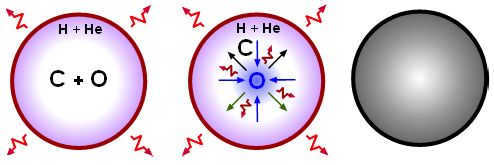
The phenomenon of cooling down a white dwarf and the subsequent crystallization of its central region is an intriguing process.
During this process, the core undergoes a significant reduction in size, reaching incredibly small dimensions. However, it is important to note that the core always remains below the Chandrasekar limit, which is the maximum mass threshold for a star to maintain its white dwarf state.
Beyond the primary sequence, a phenomenon of star termination takes place. As a result of gravitational forces, the heated gas from red giants and supergiants disperses throughout the cosmos, giving rise to a youthful planetary nebula. Over the course of hundreds of thousands of years, the nebula dissipates, leaving behind a degenerate core of a white-hued red giant. The temperatures of this entity are rather elevated, ranging from 90000 K, as determined by absorption lines in the spectrum, to 130000 K, as estimated based on the X-ray spectrum. Nevertheless, due to its diminutive size, the cooling process of this celestial luminary is exceedingly gradual.
The image of the starry sky that we observe is billions of years old, with each white dwarf potentially being accompanied by another celestial entity in outer space. These stars have transitioned into the black dwarf phase, representing the final stage of their evolution. In reality, what remains in place of these stars is a mass of material that has cooled to the same temperature as its surroundings. The distinctive characteristic of this object is its complete lack of visible light. Detecting such a star using a regular optical telescope is challenging due to its low luminosity. The primary criterion for identifying white dwarfs is the presence of intense ultraviolet and X-ray emissions.
There are two categories of known white dwarfs based on their spectrum:
- White dwarfs with hydrogen, classified as spectral class DA, lack helium lines in their spectrum;
- White dwarfs with helium, classified as spectral class DB, have helium lines as the main feature in their spectrum.
The white dwarf stage is the final phase of evolution for low-mass stars, including our Sun. During this stage, the star possesses the following characteristics. Despite its small and compact size, the stellar matter of the white dwarf has the exact mass required for its existence. In other words, white dwarfs, which have a radius 100 times smaller than the radius of the Sun, can have a mass equal to or greater than that of our star.
It can be inferred from this information that the density of a white dwarf is significantly greater than that of regular stars in the main sequence. To illustrate, our star has a density of 1.41 g/cm³, whereas white dwarfs can have densities as high as 105-110 g/cm3.
Compared to our Sun, Sirius A is 22 times brighter, while its companion Sirius B emits a fainter light, noticeably less luminous than its dazzling neighbor. The detection of the presence of a white dwarf was made possible by the X-ray telescope Chandra’s images of Sirius. White dwarfs lack a distinct light spectrum, leading them to be considered as relatively cold and dark celestial objects. However, in the infrared and X-ray ranges, Sirius B shines much more brightly, continuing to emit significant amounts of thermal energy. Unlike typical stars, where the corona is the source of X-ray waves, white dwarfs derive their radiation from the photosphere.
A cemetery of stars in our galaxy
The discovery of peculiar entities
The exploration of extraordinary stars began in the early 20th century, when astronomers consolidated the findings of observations from several closely situated binary star systems – 40 Eridanus, Sirius, and Procyon. It was revealed that each of these systems possesses a component with an unusual combination of properties. Their orbital parameters suggested a substantial mass, comparable to that of a regular star; spectral characteristics indicated a high temperature. These objects exhibited very low luminosity – they were faint, dim stars.
In 1922, a different Dutch American named W. J. Leiten discovered several similar objects and suggested the name “white dwarf” for this type of star, which is still used today. The term “white” refers to the hot temperature and is related to the star’s spectral features.
Discovery History
The visible movement of Sirius across the sky
In 1844, Friedrich Bessel, a German astronomer and mathematician, noticed a slight deviation in the motion of Sirius and speculated that it had an invisible companion star of great mass.
His hypothesis was confirmed in 1862 when Alvan Graham Clark, an American astronomer and telescope builder, discovered a faint star near Sirius while aligning the largest refractor of that time. This star was later named Sirius B.
The discovery of white dwarfs was made through the observation of Sirius B, a white dwarf that emits very little light and exerts a noticeable gravitational pull on its bright companion. This phenomenon indicates that Sirius B has a remarkably small radius but a considerable mass. Following this groundbreaking discovery, another white dwarf named Maanen was found in the Pisces constellation.
Distinctive red dwarfs
- Proxima Centauri. (M5.5 Ve) – located at a distance of 1.31 pc.; has a luminosity of 0.000 072 times that of the Sun;
- Barnard’s Star – (M5V) – situated at a distance of 1.83 pc.; possesses a luminosity of 0.000 450 times that of the Sun;
- Wolf 359 – (dM6e) – positioned at a distance of 2.34 pc.; exhibits a luminosity of 0.000 016 times that of the Sun;
- Ross 154 – (dM4e) – located at a distance of 2.93 pc.; demonstrates a luminosity of 0.000 380 times that of the Sun;
- Ross 248 – (dM6e) – situated at a distance of 3.16 pc.; possesses a luminosity of 0.000 110 times that of the Sun;
- Ross 128 – (dM5) – positioned at a distance of 3.34 pc.; exhibits a luminosity of 0.000 080 times that of the Sun;
- Gliese 581 – (M3V) – located at a distance of 6.27 pc.; has a luminosity of 0.013 times that of the Sun;
- TRAPPIST-1 – (M8V) – situated at a distance of 12.10 pc.; possesses a luminosity of 0.000 525 times that of the Sun.
Review of the TOZ-106 (MC 20-04) Shotgun: A Professional Hunter’s Perspective
When it comes to professional hunting, the TOZ-106 (MC 20-04) shotgun is a model that stands out due to its exceptional quality and the ability to quickly disassemble. This feature is crucial as it ensures maximum convenience in the field, especially when standard sets of tools are unavailable. The ergonomics of all design details guarantee the ease of use, while the smooth trigger travel and absence of difficulties when pulling the trigger ensure precise aimability. In this video, you can see a comprehensive review of the TOZ-106 shotgun through the eyes of an owner:
If you are interested in learning more about the TOZ-106 shotgun, make sure to watch this video review:
Pros and Cons
The TOZ-106 carbine model (MC 20-04) is a modern and field-adapted firearm that has proven its effectiveness in both professional hunting and recreational shooting activities. It can be utilized for practice shooting, marksmanship training, and even participation in sporting competitions. One of its main advantages is its versatility, allowing it to be used in various settings and scenarios. Whether in the field or at home, this carbine offers maximum convenience thanks to its well-thought-out design and ergonomic features, making it highly appealing to potential buyers.
In addition, the model boasts the following qualities:
Aim and front sight are included to enhance accuracy, while a comfortable stock provides a comfortable shoulder rest and a low recoil for optimal target engagement. The rifle features a ventilated sighting bar for improved shot accuracy, and the extended barrel shape contributes to better aiming. The longitudinal-sliding bolt shape ensures easy cocking and firing, while the smooth cocking mechanism enhances shooting performance.
The carbine is equipped with a latch that securely holds the folded barrel in place, ensuring the reliability of the design. The rubber buttstock adds convenience to the operation process. Chrome is used in various structural parts of the carbine to enhance durability, simplify maintenance, and prevent rust.
When compared to similar models from other manufacturers, the TOZ-106 shotgun (MC 20-04) sets itself apart with a unique blend of impressive technical features and a relatively affordable price.
This is the primary factor that catches the attention of potential buyers. Additionally, feedback from current owners who have begun using this model provides a more comprehensive understanding of its capabilities. The TOZ-106 is available with various stocks to suit individual preferences.
Intended purpose
This particular model serves a variety of purposes, including entertainment such as marksmanship training and participation in sport shooting competitions. Additionally, it is suitable for hunting small and medium-sized animals, as well as for self-defense and protecting one’s property.
Available variations
There are several different variations of this carbine available for purchase. Some come equipped with a sighting bar, while others have a buttstock made of various types of wood. Despite these variations, the technical characteristics of the carbine remain consistently high, which has contributed to its popularity and positive feedback from owners. It is also worth noting that there are models available with a plastic stock.
As scientists’ theoretical knowledge and technical abilities expand, they are able to make more discoveries. It might appear that all celestial objects are already familiar and only require further explanation of their characteristics. However, every time astrophysicists entertain this notion, the Universe presents them with another unexpected occurrence. Interestingly, many of these innovations are first predicted in theoretical models. One such example is brown dwarfs. Prior to 1995, these celestial bodies only existed on paper.
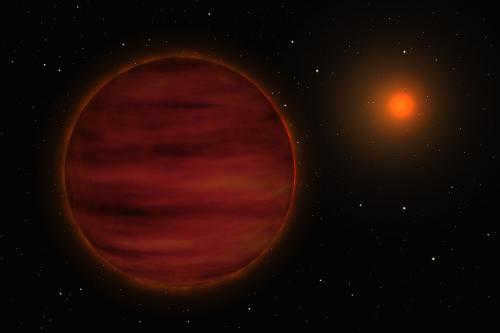
Unseen voyagers
These captivating entities possess a variety of other remarkable attributes. They are celestial bodies that roam the cosmos without any affiliation to a galaxy. In theory, these cosmic entities can traverse the expanse of space for countless millions of years. However, one of their most notable characteristics is their near-total lack of radiation. Detecting such a object without the aid of specialized apparatus is utterly impossible. The necessary equipment for astrophysicists has been absent for quite a substantial duration.
When it comes to brown dwarfs, their most intense radiation is found in the infrared part of the electromagnetic spectrum. The quest to identify these celestial bodies proved successful back in 1995, with the groundbreaking discovery of Teide 1. Teide 1 is categorized as an M8 dwarf and can be found within the Pleiades cluster. That same year, another brown dwarf named Gliese 229B was spotted, located a mere 20 light-years away from our Sun. Gliese 229B is in orbit around its parent star, the red dwarf Gliese 229A. Ever since these initial findings, the number of known brown dwarfs has skyrocketed to over a hundred.
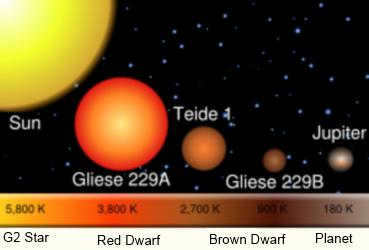
Identifying brown dwarfs can be challenging due to their similarities to planets and light stars in several aspects. They have a radius that is comparable to Jupiter, which remains relatively consistent across the entire mass range of brown dwarfs. This makes it exceptionally difficult to differentiate them from planets.
A way to differentiate between light stars is through the detection of X-ray and infrared radiation. This feature is only prominent in brown dwarfs whose temperature has dropped to planetary levels, reaching as low as 1000 K.
Method of distinguishing from bright stars
Methane can also serve as a distinguishing characteristic. Towards the end of its life cycle, a brown dwarf, which is a star with a relatively low temperature, can accumulate a significant amount of methane. Other celestial bodies are unable to cool down to this extent.
In addition to methane, the brightness of brown dwarfs and stars is also used to differentiate between them. Stars gradually dim as they approach the end of their lifespan, while dwarfs continuously cool down throughout their “lifetime”. In the final stages, brown dwarfs become so dark that they cannot be mistaken for stars.
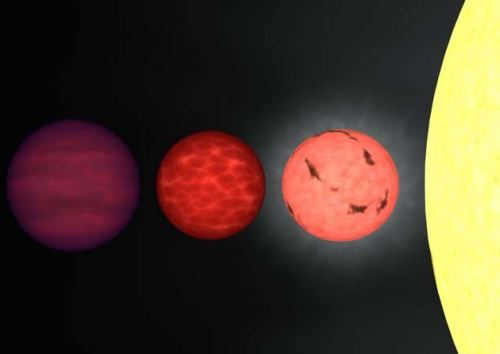
The temperature on the surface of the described objects changes depending on their mass and age. The potential values span from being similar to planets to those that are typical for the coldest stars in class M. As a result, two additional spectral types were initially designated for brown dwarfs, namely L and T. Additionally, there was also a theoretical class Y, which has since been proven to exist. Now, let’s delve into the specific characteristics of the objects in each of these classes.
The stars that belong to the first type of the named class differ from the representatives of the previous class M due to the presence of absorption bands not only of titanium oxide and vanadium, but also of metal hydrides. It is this distinct feature that allowed for the identification of a new class L. Additionally, lines of alkali metals and iodine have been found in the spectra of some brown dwarfs belonging to this class. As of 2005, a total of 400 objects of this kind have been discovered.
Class T
T-dwarfs exhibit the presence of methane bands in the near infrared spectrum. Previously, similar features were only observed in the gas giants of our Solar System and Saturn’s moon Titan. In the T-class of dwarfs, alkali metals like sodium and potassium replace the hydrides FeH and CrH, which are characteristic of L-dwarfs.
Scientists believe that these objects should have a relatively small mass, not exceeding 70 times the mass of Jupiter. Brown T-dwarfs share many similarities with gas giants. They have surface temperatures ranging from 700 to 1300 K. If one of these brown dwarfs were to be captured in a camera lens, it would appear as a pinkish-blue object in the photo. This color effect is caused by the influence of sodium and potassium spectra, as well as molecular compounds.
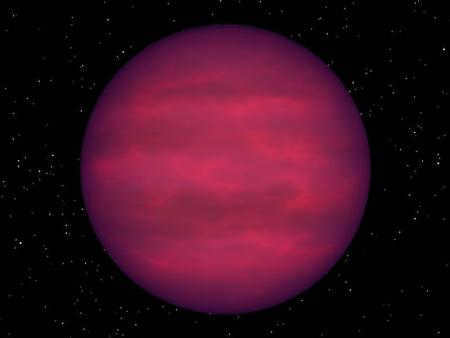
Class Y
The final spectral class has only existed as a theoretical concept until recently. The surface temperature of these objects must be below 700 K, which is equivalent to 400 ºC. These particular brown dwarfs cannot be detected in the visible spectrum, making it impossible to capture a photograph of them.
However, in 2011, a group of American astrophysicists made an exciting announcement regarding the discovery of several of these incredibly cold objects, with temperatures ranging from 300 to 500 K. Among them is WISE 1541-2250, located 13.7 light-years away from our Sun. Another example is WISE J1828+2650, which has a surface temperature of 25 ºC.
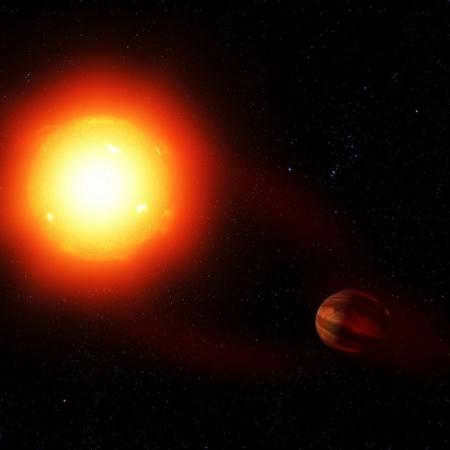
To fully cover the topic of fascinating celestial objects, it would be remiss not to mention the “Death Star”. This hypothetical twin of the Sun, believed to exist by certain scientists, is said to be located at a distance of 50-100 astronomical units from the Sun, beyond the Oort cloud. According to astrophysicists, this alleged object is in a binary system with our star and has a cyclic orbit that brings it close to Earth every 26 million years.
This hypothesis is closely linked to the theory proposed by paleontologists David Raup and Jack Sepkowski in 1984, suggesting periodic mass extinctions of biological species on our planet. While this theory remains controversial, there are compelling arguments in its support.
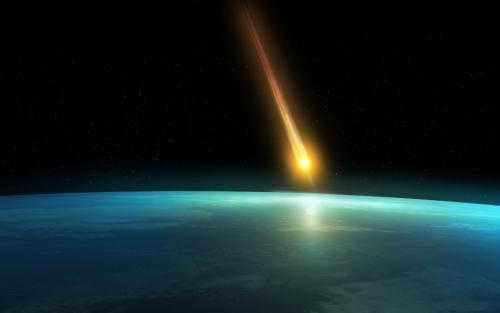
“Death Star”, also known as Nemesis, can exist as a brown, white, or red dwarf. However, as of now, no suitable objects have been discovered to fulfill this role. There are theories that propose the presence of an unidentified giant planet in the Oort cloud region, which influences the orbits of comets. This planet attracts ice blocks towards itself, preventing potential collisions with Earth, thus functioning differently from the hypothetical “Death Star”. Nevertheless, there is currently no concrete evidence confirming the existence of the planet Tyuhe (referred to as the sister of Nemesis).
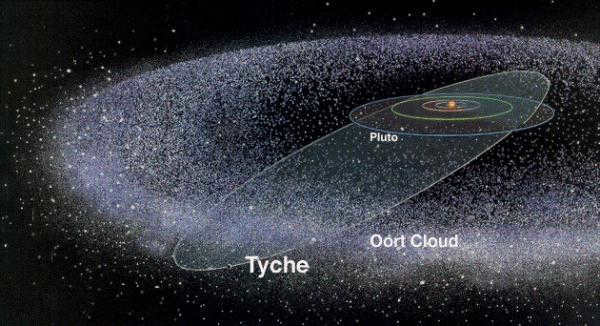
Astronomers consider brown dwarfs to be relatively new celestial objects, with plenty of information yet to be discovered and analyzed. It is already believed that these objects can potentially be companions to numerous known stars. The study and detection of such dwarfs present significant challenges, pushing the boundaries of scientific equipment and theoretical understanding.
Dwarf stars, despite their small size, are actually quite massive and emit low levels of luminosity.


Brown dwarfs, which are slightly larger than Jupiter, are extremely cold celestial bodies. While they form through the same process as other stars, their initial mass is too low to sustain nuclear reactions, resulting in a very dim luminosity.
It should be noted that within our Milky Way, red dwarfs are the most abundant type of star. They account for a staggering 80% of all celestial bodies in our galaxy. In the Hertzsprung-Russell diagram, red dwarfs fall into the category of main-sequence stars, specifically occupying the lower region of the diagram. They are typically classified within the late spectral class, with the majority falling into the M spectral class. Interestingly, the closest red dwarf to our sun is known as Proxima Centauri, which also happens to be the second closest star to Earth (not to be mistaken for a planet). The distance between us and Proxima Centauri is a mere 4.22 light years, which is approximately 270 thousand times greater than the distance to our sun.
On the other hand, sub-brown dwarfs, or brown subdwarfs, are frigid celestial formations that exist below the mass threshold of brown dwarfs. They are often considered more akin to planets rather than stars.


Dwarf stars. The Sun is a type of star known as a dwarf star.
In our solar system, the Earth orbits around the Sun, which is classified as a dwarf star. While the Sun is much larger than our planet and other planets in our galaxy, it is not the largest star in the galactic scale. Astronomers categorize it as a dwarf star.
Dwarf stars are the most abundant type of star in our Milky Way galaxy, making up 90% of all stars. These stars are referred to as main-sequence stars based on their position in the Hertzsprung-Russell diagram.
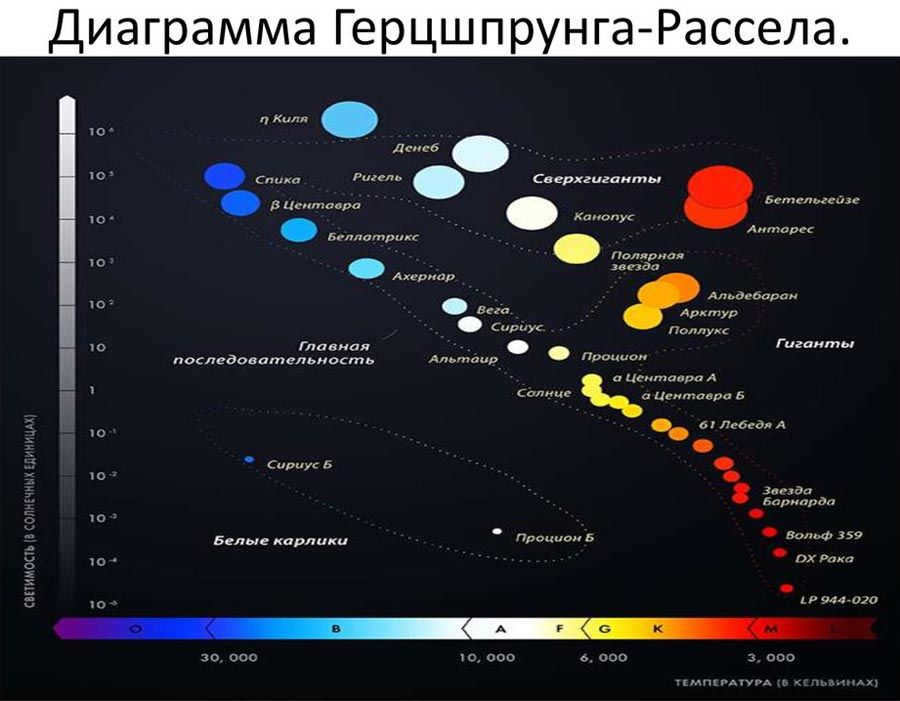
Diminutive stars with low luminosity are referred to as dwarf stars. Despite their small physical size, these stars possess considerable mass. They can be categorized into various shades such as yellow, orange, red, blue, white, black, brown, and sub-brown.
Researchers are continuously exploring white dwarf stars and their accompanying planetary systems. By doing so, they aim to gain knowledge about the fate of our own solar system and the Sun billions of years before the eventual end of the world.
Sirius, the most radiant star visible in our night sky, is a binary system that consists of a white dwarf.
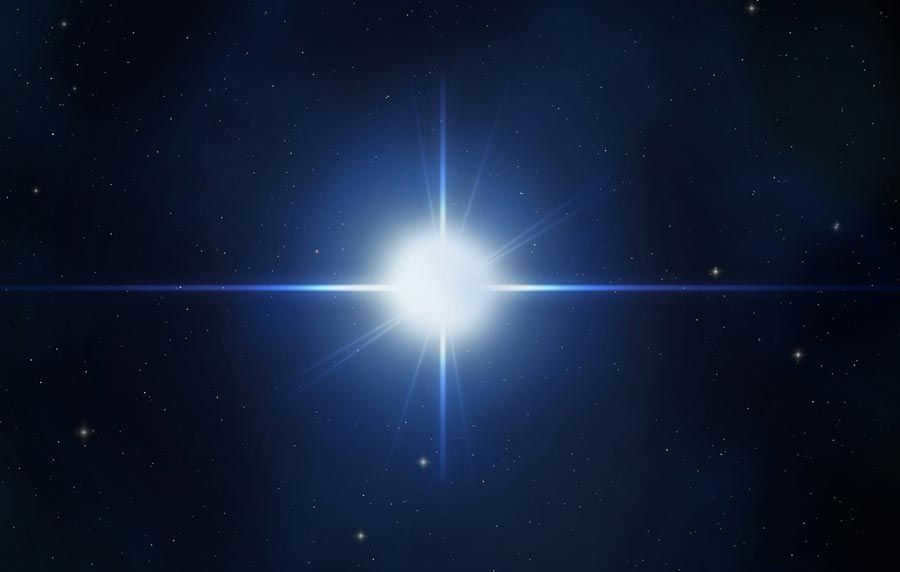
The existence of this kind of star is purely theoretical. Blue dwarfs are believed to form from red dwarfs before the complete depletion of hydrogen, and it is assumed that they undergo further evolution to become white dwarfs.
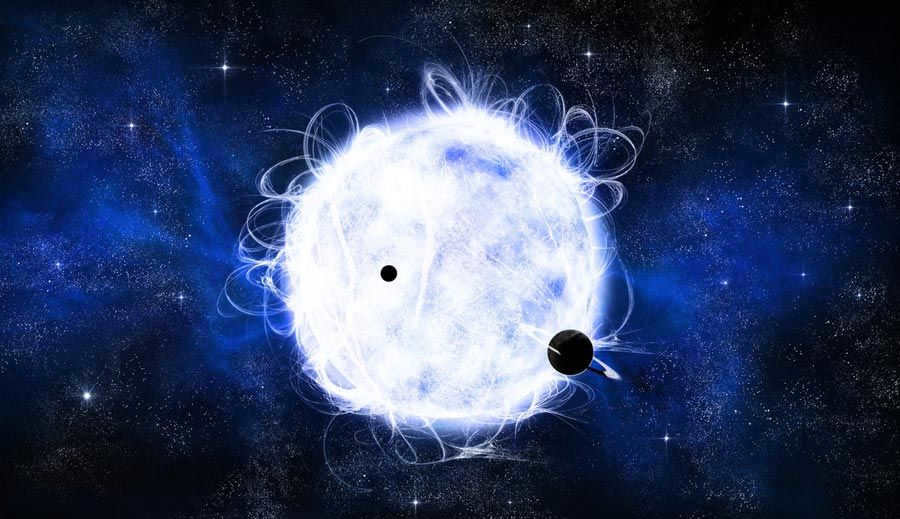
Yellow dwarfs are a category of diminutive main-sequence stars that possess masses ranging from 0.8 to 1.2 solar masses and surface temperatures ranging from 5000-6000 K. The average lifespan of a yellow dwarf is approximately 10 billion years. Once all of its hydrogen fuel is exhausted, the star undergoes a significant increase in size and transforms into a red giant. Aldebaran serves as an illustration of this particular stellar variety.
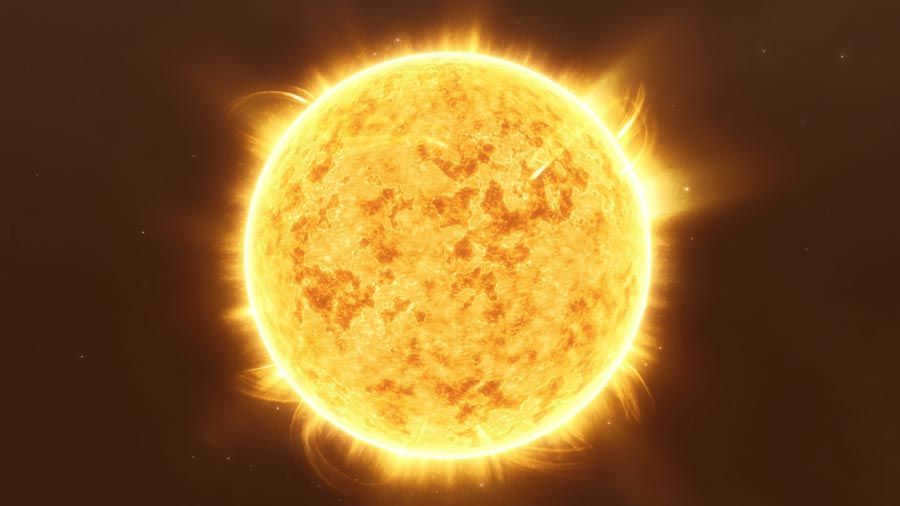
Orange dwarfs are celestial objects that fall between the red dwarfs of the M-class main-sequence and the yellow dwarfs of the G-class. These stars have a mass ranging from 0.5 to 0.8 times that of our Sun and maintain an effective temperature within the range of 3900-5200 K.
When it comes to luminosity, orange dwarfs have an average output of 0.1 to 0.6 times the luminosity of our Sun. Some notable examples of orange dwarfs include Alpha Centauri B and Epsilon Indi.
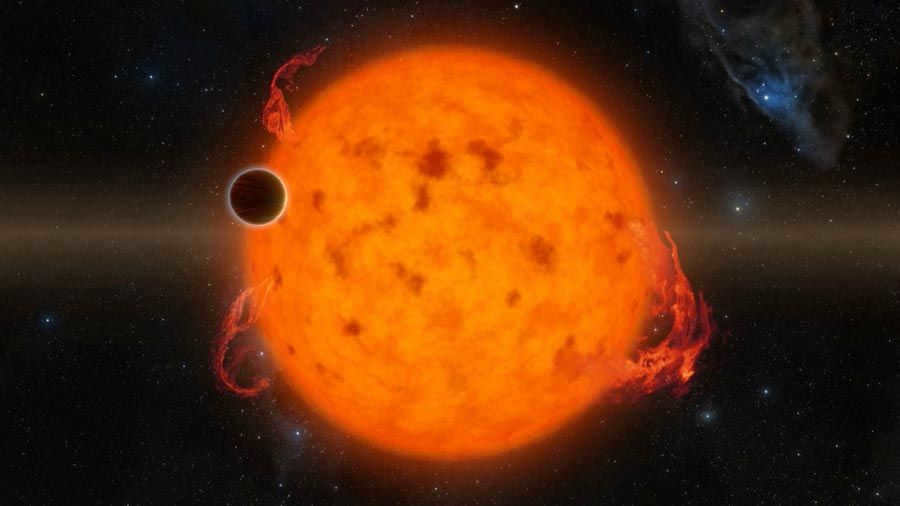
Brown dwarfs, which are slightly larger than Jupiter, are frigid celestial bodies that form from stars outside the main stellar sequence. After their fusion reactions cease, they rapidly cool down and transform into planet-like entities, with extremely low luminosity.
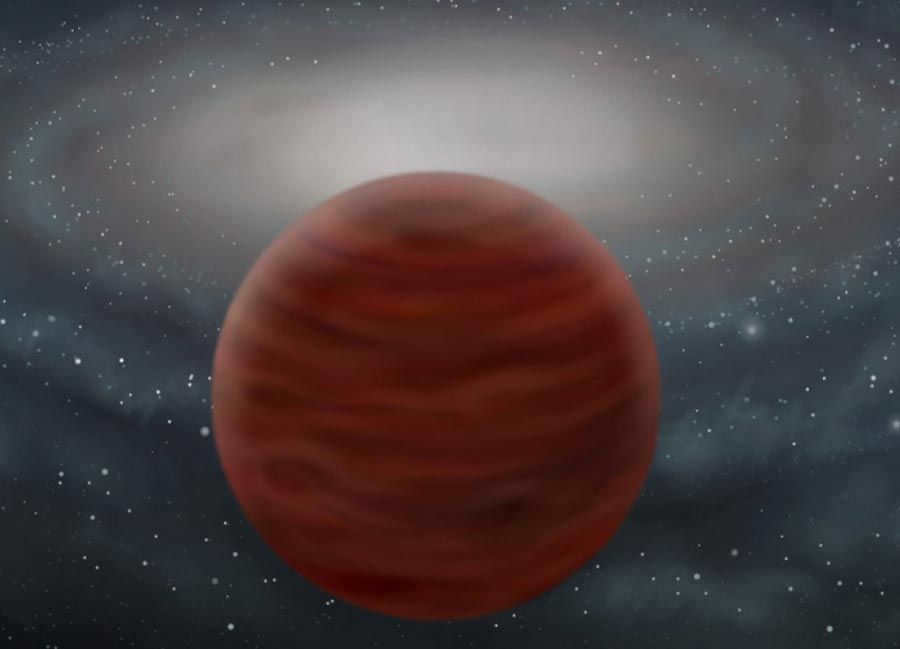
Sub-brown dwarfs, also known as brown subdwarfs, are frigid formations that reside below the mass threshold of brown dwarfs. With a mass less than 0.012 solar masses, they originate from the collapse of a gas cloud. The scientific community has yet to reach a definitive consensus on distinguishing between planets and sub-brown dwarfs.
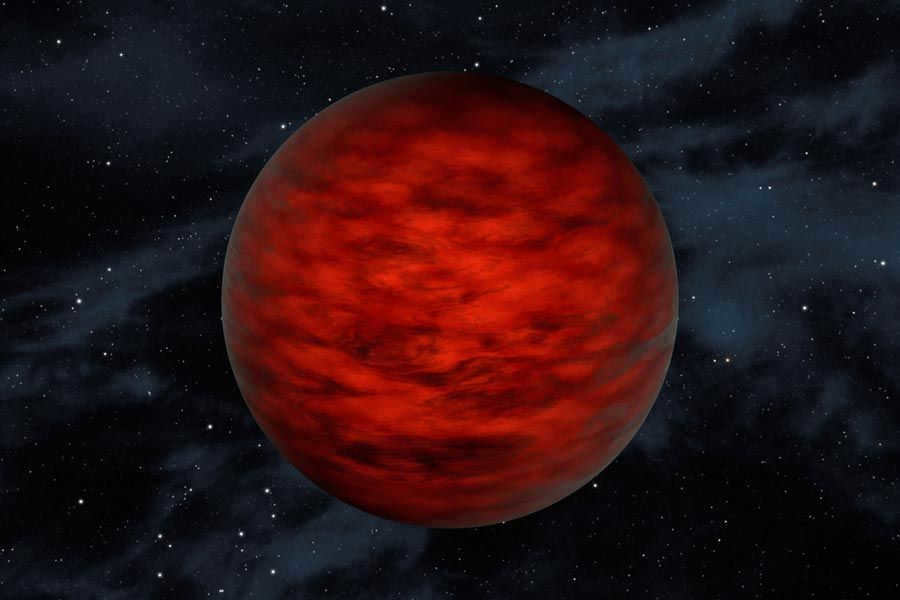
Many people have heard of red dwarfs, but not everyone knows exactly what they are. Red dwarfs are essentially small stars with a smaller mass than the Sun. They have a lower luminosity and temperature, ranging from about 1500-3000 degrees Kelvin. Similar processes occur on red dwarfs as on the Sun, but due to their smaller mass, the energy release from proton-proton reactions in the star’s core is less intense, resulting in a lower temperature. Red dwarfs are larger than Jupiter, but smaller than medium-sized stars like our Sun. Their luminosity is only 0.01% of the Sun’s. Despite their prevalence in our galaxy, red dwarfs cannot be seen with the naked eye, not even the closest one to us, Proxima Centauri. Red dwarfs make up the majority of galactic bodies, accounting for 80% of them.
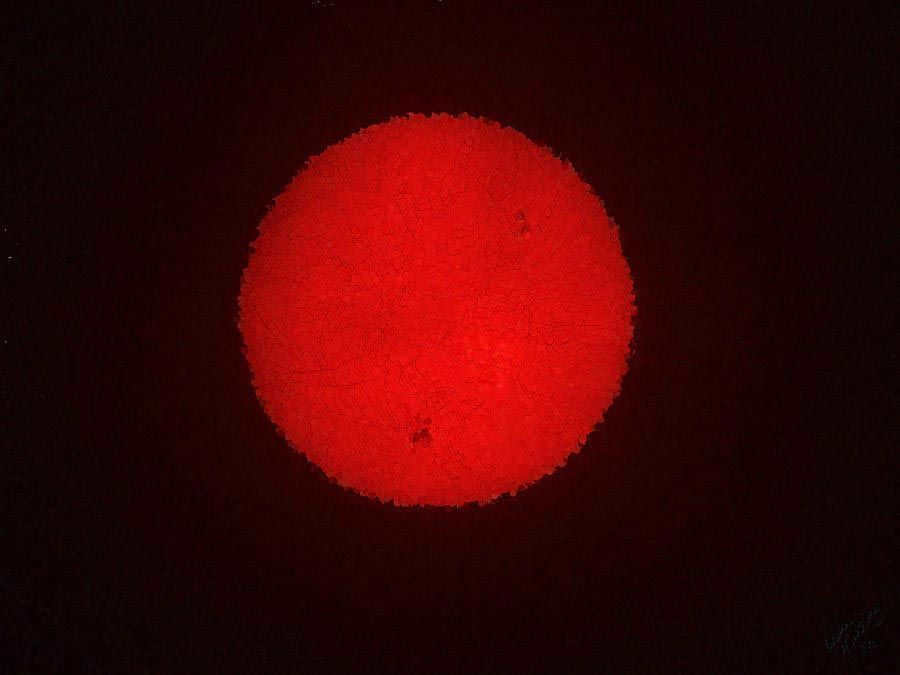
Black dwarfs are essentially cooled-down white dwarfs that no longer emit visible radiation. They represent the final stage of white dwarf evolution. The masses of black dwarfs, just like white dwarfs, are capped at 1.4 solar masses.
These celestial objects exist only in theory, as scientists estimate that it would take an inconceivable amount of time for a black dwarf to form. This duration is so immense that even if a star were to be born immediately after the Big Bang and endure for another 10 epochs of the current Universe, it still wouldn’t have sufficient time to transition into a black dwarf.
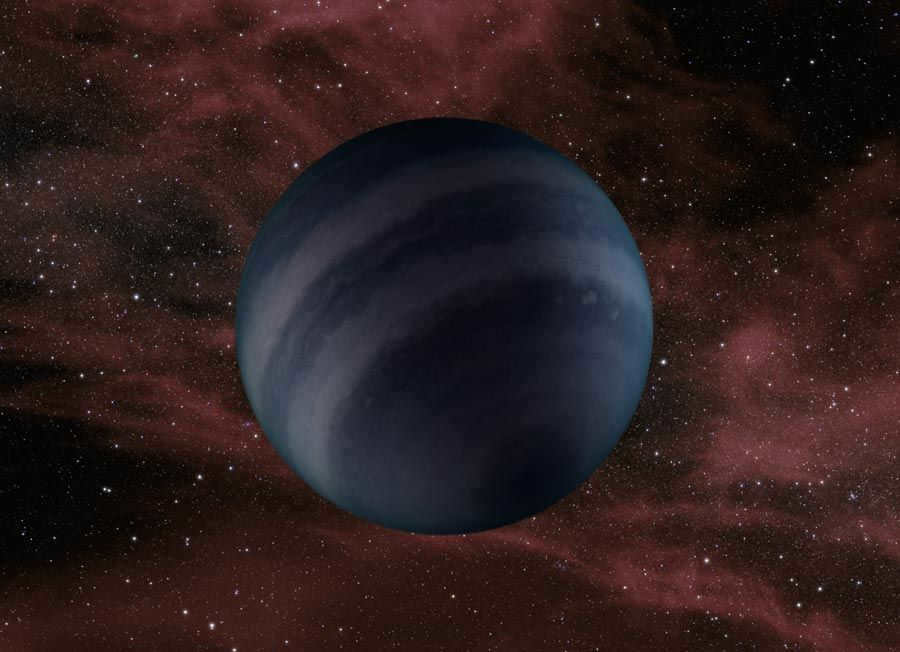
Our Universe is full of wonders and never ceases to amaze. Sometimes, it even seems more fascinating than the most intricate works of fiction.
These observations are supported by various sources, such as Astronet and Curious about astronomy, which provide valuable insights into the vastness of our cosmos.
One particular phenomenon that captivates astronomers is the existence of dwarf stars. Despite their diminutive size, these stars possess significant mass and emit low levels of luminosity.
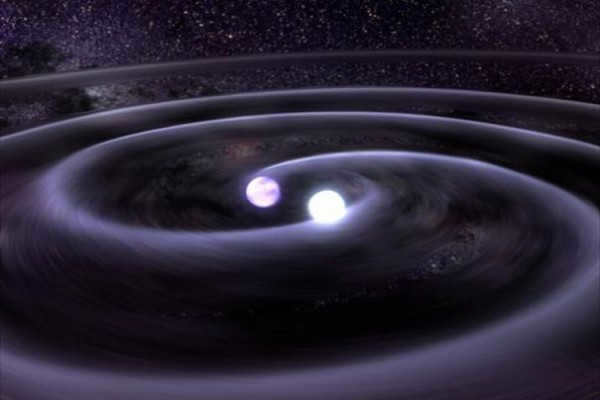
Red dwarfs are bigger than Jupiter, yet smaller than a medium-sized star like our Sun. They have a luminosity that is only 0.01% of the Sun’s. None of these red dwarfs can be observed without the aid of a telescope, not even the one closest to us, Proxima Centauri.
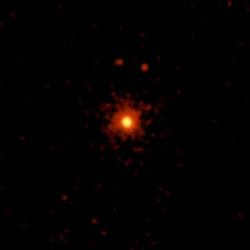
To explore space, a significant amount of labor is required, just as it is necessary for activities on the worldwide web. For instance, the development and promotion of a website demand a comprehensive approach to problem-solving, making it advisable to delegate such tasks to professionals.
Indeed, dwarf stars are compact celestial bodies that emit a dim light, despite their considerable mass.
It is important to mention that all class objects possess a compact size, although they may vary in other attributes. Hence, dwarf stars are categorized into different types and variations.
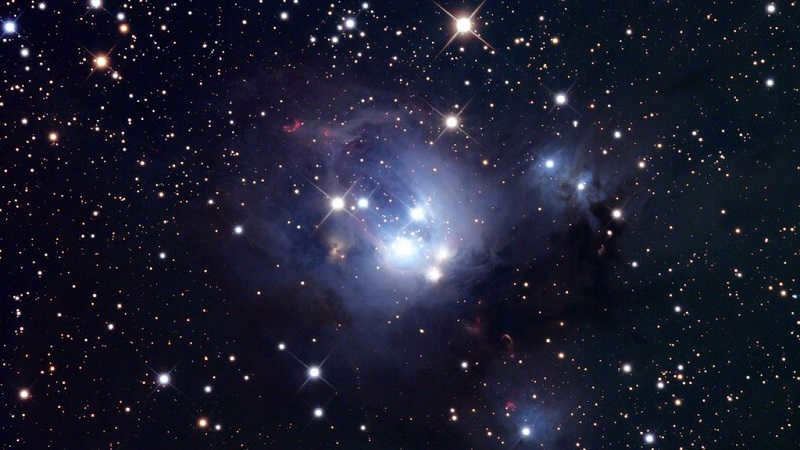
White dwarf stars
To clarify, a white dwarf is a star that has burned out and is now cooling down. Essentially, it is a celestial body in the last phase of its development. Despite being similar in size to our planet, white dwarfs have a mass comparable to that of the sun. They belong to the spectral class A.
So, which stars transform into white dwarfs and what sets them apart from regular stars, you might wonder?
Actually, stars of small to medium size can undergo this transformation, but only in the final stages of their life cycles. These stars are referred to as degenerate stars, where the pressure of the degenerate gas counteracts the force of gravity.
It is a fact that the compression of the degenerate gas prevents the collapse from continuing. Consequently, the object undergoes a transformation into a white dwarf star, as long as its mass does not exceed 1.4 times that of the Sun. However, if the mass surpasses this limit, a neutron star is formed.
What is the term for stars that are yellow dwarfs?
Yellow dwarfs are actually a type of main-sequence stars that belong to the spectral class G. According to scientific estimates, their mass can range from 0.8 to 1.2 solar masses.
Once all the hydrogen within them is consumed, a yellow dwarf star expands and transforms into a red giant.
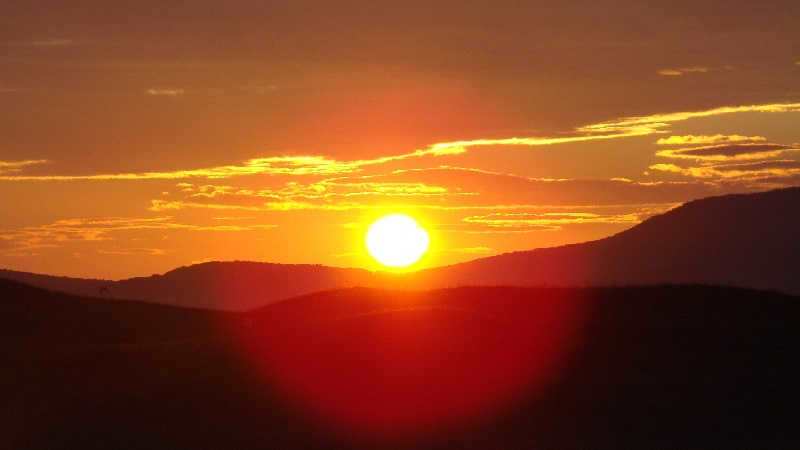
Orange dwarf stars
Orange dwarf stars are a distinct type of main sequence star that are smaller in size and have a spectral class K. They have masses ranging from 0.5 to 0.8 times that of the Sun, and their lifetimes are longer compared to our Sun.
It can be said that orange dwarf stars fall between yellow dwarfs and red dwarfs in terms of their characteristics.
Therefore, the red dwarf star is a diminutive entity with a modest mass value. Consequently, these celestial objects exhibit a low temperature and a feeble level of luminosity. In reality, due to this circumstance, they remain imperceptible from Earth in the absence of specialized equipment.
On the Hertzsprung-Russell diagram, they occupy the lowermost section. Primarily, they belong to the later spectral class, frequently falling into the M category.
The Milky Way, our galactic home, abounds in red dwarf stars. Astronomers approximate that these comprise up to 80% of all astronomical entities within our stellar system.
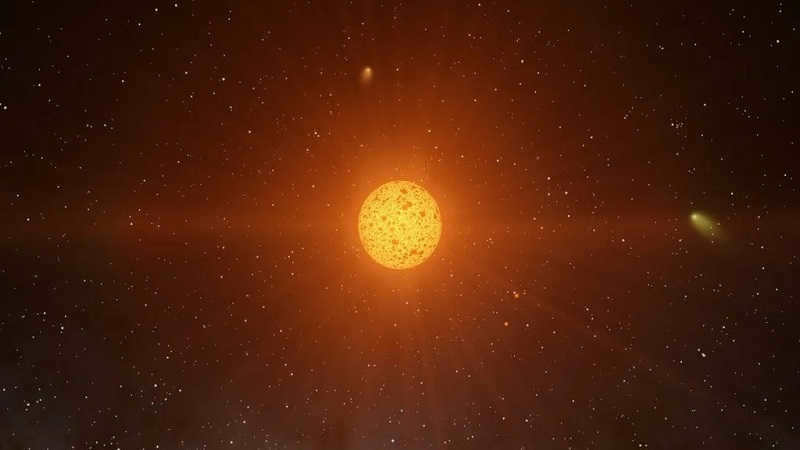
Proxima Centauri (red dwarf).
Brown representatives
Finally, a brown dwarf is a dimly glowing star (class T). Due to their small initial mass, nuclear reactions do not occur within them. These reactions are simply not possible. As it happens, brown stars are extremely cold celestial objects.
They do have thermonuclear reactions to produce light elements such as lithium, boron, and beryllium. However, the heat released is minimal, causing the nuclear processes to cease. Consequently, the celestial body itself cools down rapidly and transforms into planet-like objects.
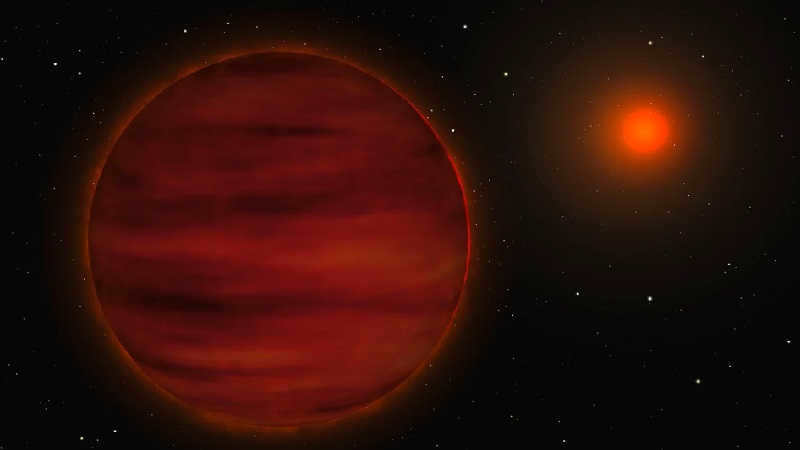
What are the names of dwarf stars that are referred to as black or dead stars?
Essentially, a black dwarf is a diminutive celestial body that has cooled down, resulting in the absence of any nuclear reactions. This might be due to insufficient mass for such processes to take place, or because the core has completely consumed all its fuel and ceased to function. In the latter scenario, these stars are commonly known as dead or extinguished stellar bodies.
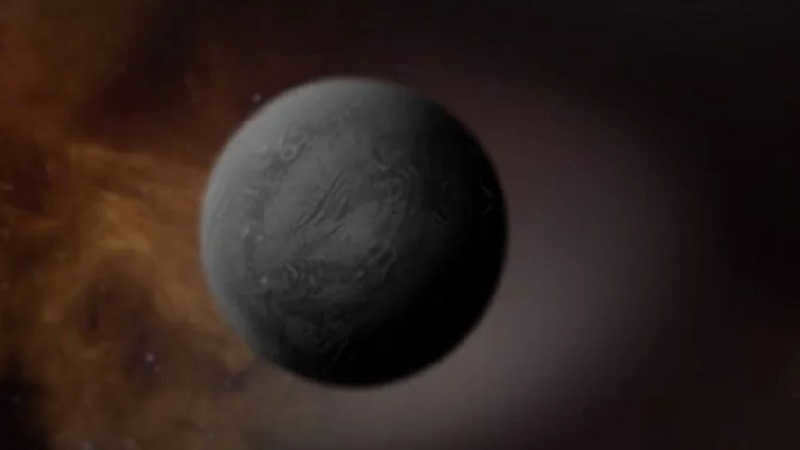
Furthermore, there exist sub-brown or brown subdwarfs which possess a lower mass compared to brown dwarfs. Additionally, these objects are entirely devoid of heat and can be classified as planets.
Illustrations of dwarf stars
Due to their abundance, it would be impractical to enumerate all of them. Nevertheless, we will mention a few of the most renowned ones.
For instance, the roster of white dwarfs includes Procyon (component B), while the group of orange dwarfs includes Alpha Centauri B or Arcturus.
The most basic and widely recognized yellow dwarf is our very own Sun.
Furthermore, there are red dwarfs such as Proxima Centauri (the nearest to Earth) and Antares. On the other hand, the representative of the brown dwarf category is Gliese 229B.
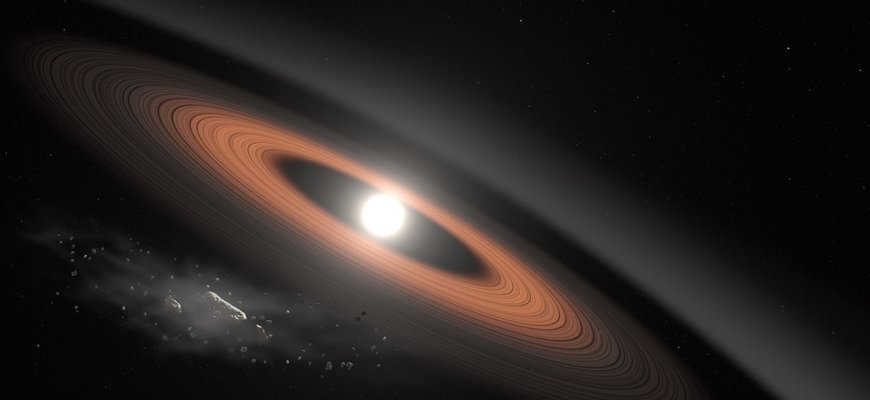
White dwarf stars are dense celestial bodies made up of a mix of nuclear and electron plasma. These stars have masses similar to or greater than the Sun but have much smaller radii. Unlike other stars, white dwarfs do not generate their own nuclear energy. Once they have exhausted their supply of helium and hydrogen, they shed their outer layers, leaving behind bare nuclei primarily composed of oxygen and carbon.

The bright Sirius A is accompanied by the white dwarf Sirius B, as shown in this photo taken by the Hubble telescope.
Unraveling the mystery of white dwarfs
White dwarfs represent the final phase in the life cycle of low-mass stars, including our own Sun. The understanding of white dwarfs took a significant step forward in 1926 with the introduction of the concept of degenerate gas. English astrophysicist Ralph Howard Fowler made progress in explaining the unique internal structure of white dwarfs but could not fully elucidate their origin. Estonian astronomer Ernst Epik proposed a theory that red giants form from stars due to the depletion of nuclear fuel. Vasily Fesenkov, a pioneering figure in astrophysics, suggested that main-sequence stars undergo mass loss, which has an impact on the process of stellar evolution.
Once the hydrogen fusion process ceases in the stellar core, the central region of the star experiences a significant compression, while the outer layer expands to a considerable degree. This phenomenon leads to an overall decrease in luminosity, which plays a crucial role in the star’s evolution into a pulsating red giant. As a result of this transformation, the star’s envelope becomes detached from the central hot, high-density core, leading to the formation of a pulsating red giant. Eventually, this detached envelope evolves into an expanding planetary nebula. Simultaneously, the core contracts to an incredibly compact size, remaining below the Chandrasekhar limit. The loss of the envelope can be attributed to several factors:
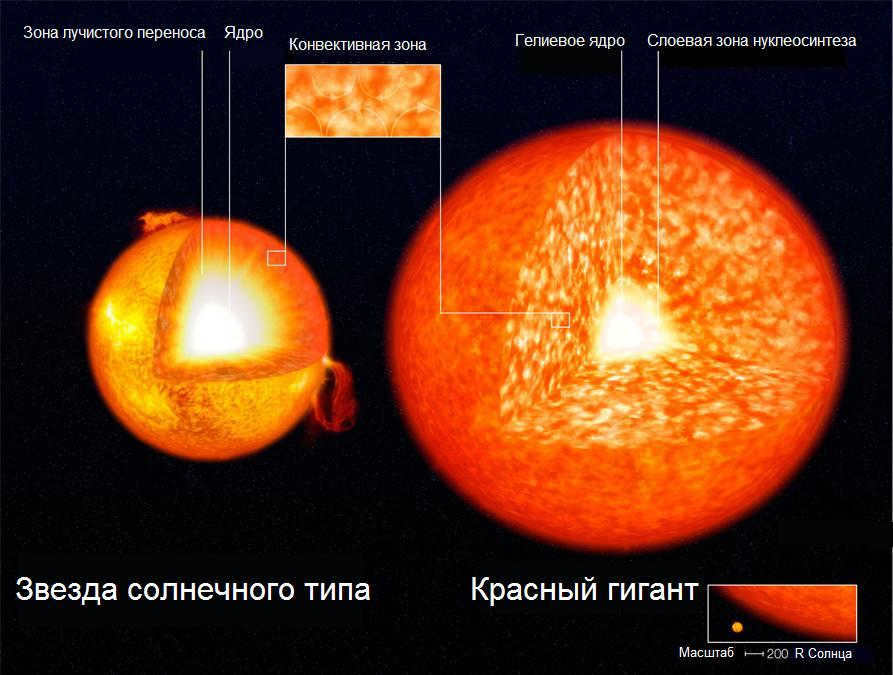
Structure of a solar-type star in the main-sequence and a red giant with an isothermal helium core and a layered nucleosynthesis zone (scale not respected)
The process of triple helium reaction and the creation of isothermal nuclei in red giants
The triple helium reaction produces less energy than the Bethe cycle. When the helium is depleted and the energy source is exhausted, more complex nucleosynthesis reactions are possible, but they require extremely high temperatures where photons scatter and neutrino-antineutrino pairs are formed, carrying energy away from the core without obstruction. Volumetric neutrino cooling is characterized by an incredibly high rate, much higher than classical photon surface cooling, allowing for unlimited energy transfer from the star’s interior to the lower layers of the stellar atmosphere.
Development of white dwarfs: a closer look
The development of white dwarfs begins when they emerge as the remnants of red giants, having discarded their outer layers. The youthful planetary nebula’s lower stellar atmosphere boasts an incredibly high temperature. This extreme heat gives rise to a predominantly X-ray (soft) and ultraviolet (hard) radiation spectrum. White dwarfs are classified into various categories based on the range and characteristics of the radiation they emit:
According to I. Iben’s hypothesis, it is possible for red pulsating giants to shed their outer layers and create planetary nebulae. This shedding process occurs during the helium flash and quiescence phases. When the outer shells are shed during a flare, they form helium-type white dwarfs with a DB spectrum class. Similarly, if the same process occurs with active hydrogen layer sources, white hydrogen dwarfs are formed, which have a spectrum class DA. The duration of a helium flash is approximately one-fifth of the pulsation cycle. This phenomenon explains the ratio of non-dwarfs to H-dwarfs, which is 20 to 80.
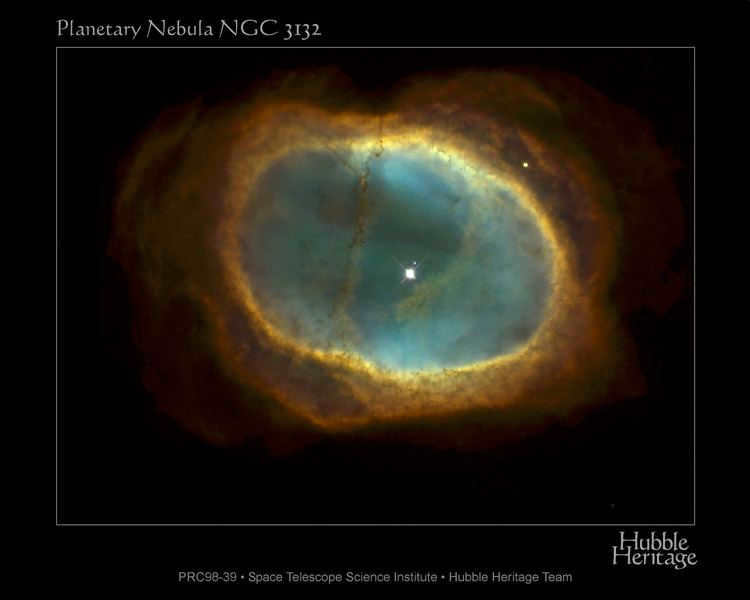
The double star at the center of the planetary nebula NGC 3132 is a twin to Sirius.
All About Cooled White Dwarfs
After billions of years, white dwarfs cool down to become black dwarfs, which no longer emit visible light. Currently, there are no black dwarfs in the Universe as the age of the oldest stars is not yet 13 billion years. However, some white dwarfs have already cooled down to temperatures below 4000 K. The final stages of cooling of black dwarfs are influenced by gravitational capture and the annihilation process of dark matter.
Although this small value is 10 11 times less than the amount of solar radiation, the production of energy by almost cooled black dwarfs will be sufficient thanks to this mechanism. The energy production will only cease if the galactic halo is eliminated. Once the dark matter is annihilated, this process will come to an end, resulting in the ultimate extinction of the black dwarf.
White Dwarfs and the Fascinating Astronomical Phenomena They Exhibit
When stars form double systems with differing masses, their evolution takes on distinct paths. The more massive components often transform into white dwarfs, while the less heavy ones remain on the main sequence. However, if the less heavy component progresses to the red giant branch during its evolution, the star expands and fills the equipotential surface that includes the first Lagrangian point L1, known as its Roche cavity. The convergence of these cavities at the libration point gives rise to a range of captivating phenomena within the field of astronomy.
Curious information
The dim star Van Maanen, situated in the heart of the Pisces constellation, is recognized as the closest white dwarf to the Sun. Its detection dates back to 1917 when American astronomer Adrian Van Maanen compared the Pisces constellation in 1914 and 1917. In terms of white dwarfs within star systems, the nearest one is Sirius B, which was discovered in 1844 by the renowned German mathematician and astronomer Friedrich Bessel. He observed Sirius deviating from its linear path.
When observing stars, we perceive them as shining points with varying degrees of brightness. Certain stars exhibit distinct colors – for instance, red stars like Betelgeuse or orange stars like Aldebaran. However, the size of stars remains imperceptible, as they all appear identical even when viewed through the most powerful telescope.
Nevertheless, it is fascinating to comprehend the scale of stars, ranging from the smallest to the largest. This understanding is limited to those stars that have been identified by scientists, as the Universe is immense and always harbors astonishing phenomena that have yet to be discovered.
Alright, let’s take a closer look and determine the sizes of stars.
Stars Classification
In order to gain a better comprehension of the subject matter, it is beneficial to initially examine the well-known Hertzsprung-Russell diagram. In this diagram, researchers have organized the stars that are currently known based on their temperature and luminosity.
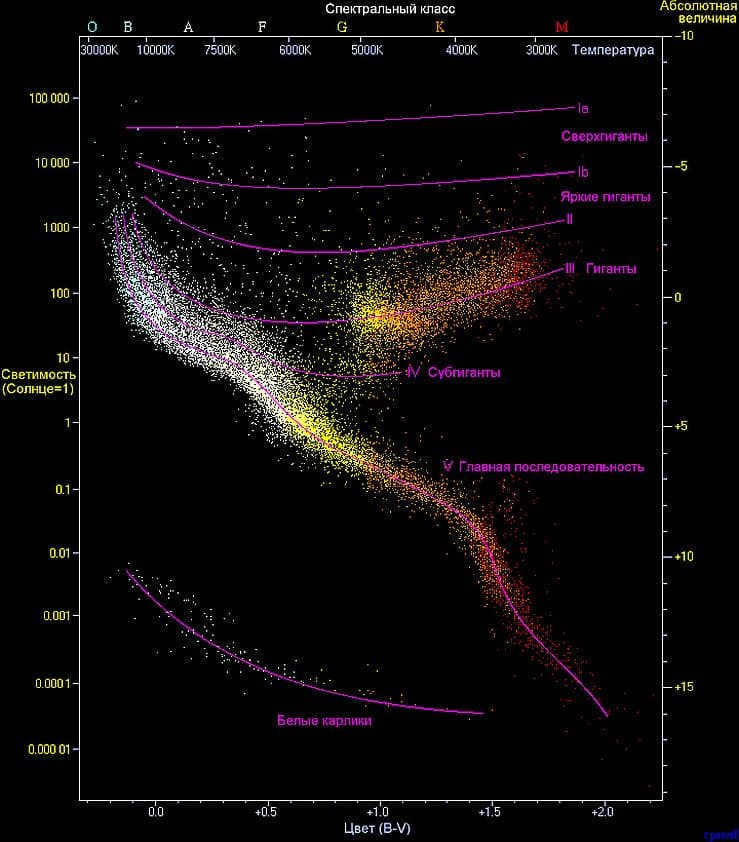
It was discovered that the stars are organized into distinct clusters, and within these clusters, there is a clear correlation with size. Hence, white dwarfs exist in isolation, while giants and supergiants form their own clusters.
However, there is also a characteristic feature on this diagram known as the Main Sequence – a diagonal strip with our Sun located in the middle. The majority of stars fall within this range – they are ordinary and unremarkable, just average. Our attention is drawn more towards the lower and upper regions of the diagram, where the smallest and largest stars can be found.
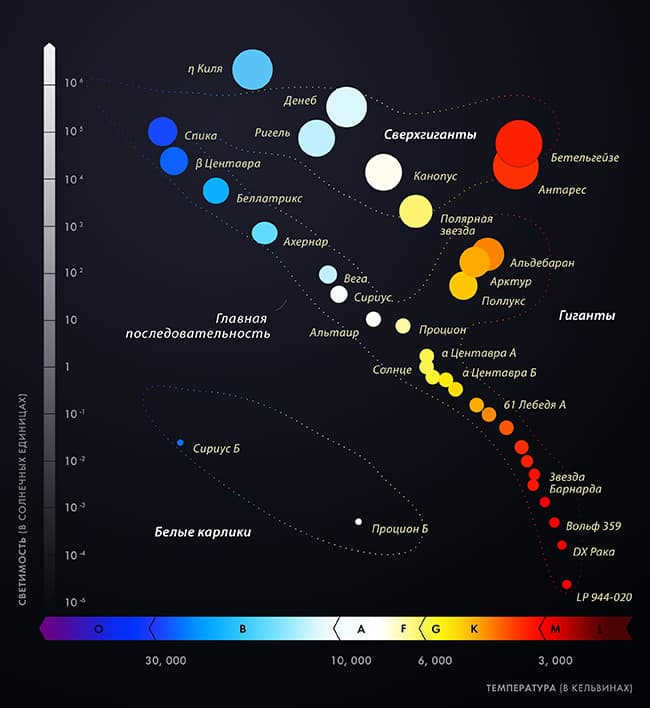
This diagram illustrates several stars.
Furthermore, there exists an additional fascinating type of stars known as neutron stars, which are noteworthy due to their size.
The sun
Naturally, the primary celestial body deserving our attention is the Sun. It is not only the nearest star to us but also the most extensively researched and measured. Additionally, other stars are often compared to the Sun in terms of their size and mass, making it a sort of benchmark.
Therefore, the Sun is a typical yellow dwarf, of which numerous examples exist even within our own Milky Way galaxy. When viewed from Earth, it appears to be the same size as the Moon, but in reality, it is significantly larger. Its equatorial diameter measures approximately 1,392,700 kilometers, which means its radius is nearly 700,000 kilometers.
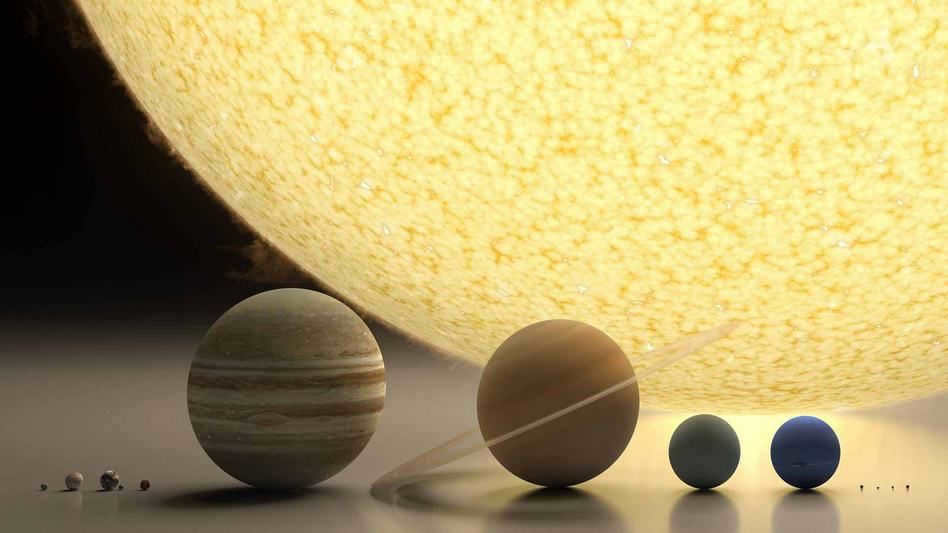
When comparing the planets of the solar system to the Sun, it becomes apparent just how massive and fast-rotating stars are. This rapid rotation causes stars to be slightly flattened between their poles, resulting in the equator having a larger radius than the poles.
An interesting fact is that if planets like Earth were lined up along the diameter of the Sun, there would be 109 planets in a row. Furthermore, if you were to pour these planets into the Sun, it could hold a staggering amount – 1,301,019 planets, to be exact.
Now you can truly grasp the immense size of the Sun, despite it being classified as a yellow dwarf and seemingly unremarkable. However, it becomes even more fascinating to contemplate the size of other stars!
It appears that the tiniest stars are those in which the possibility of a thermonuclear reaction forming is barely achievable. Brown dwarfs are objects of this nature. They can have a mass ranging from 13 to 75 times that of Jupiter, and their dimensions are comparable to Jupiter’s, meaning they have a radius of only about 15 thousand kilometers.
If a brown dwarf were to possess a mass less than 13 times that of Jupiter, it would be unable to initiate a thermonuclear reaction and would classify as a planet. Conversely, if it had a mass exceeding 75 times that of Jupiter, it would qualify as a fully-fledged star.
The size of a star comparable to Jupiter is perhaps the smallest possible? No, there are even smaller ones.
Neutron stars are the tiniest of them all.
A neutron star is an object with the mass of the Sun and a diameter of only 10 to 20 kilometers. These remarkable objects are essentially the super-dense cores of giant stars.
With a massive mass, the density of the material in such a star is incredibly high – several times the density of an atomic nucleus. Just a teaspoon of its matter would weigh a billion tons! However, a neutron star also has an inner core that is even denser. Very interesting processes occur there, unlike in ordinary stars. Their surface gravity and the strength of their magnetic fields are immense, as the enormous mass is concentrated in a small volume.

The dimensions of a neutron star are only a few tens of kilometers.
Despite their diminutive size, neutron stars exhibit high temperatures – ranging from 100,000 to one million degrees on their surface. Additionally, they rotate at incredibly high speeds – with some completing several hundred revolutions per second. Neutron stars emit intense and focused radiation across various radio frequencies, including X-rays. If this radiation is directed towards Earth, scientists are able to detect a pulsar. Essentially, a pulsar is a neutron star that is rapidly rotating and emitting radiation in our direction.
Neutron stars are the smallest type of star. However, if one believes that they are unworthy of being classified as “normal” stars due to their status as remnants, it is worth examining them more closely.
When a red giant sheds its outer layers, what remains is its core, which undergoes a process of contraction and becomes extremely hot. This compact object is known as a white dwarf. Although its mass may vary slightly compared to the mass of the Sun, its size is significantly smaller, measuring only tens of times smaller than the Sun.
There is a similarity between white dwarfs and neutron stars in terms of their mass, with neutron stars being even smaller in size. However, the difference lies in the density. White dwarfs have a lower density, although they are still relatively massive. In fact, a single cubic centimeter of white dwarf matter can weigh tens of tons.
White dwarfs are subject to the Chandrasekhar limit, which dictates their fate. If a white dwarf’s mass at its formation exceeds 1.4 times the mass of the Sun, it will collapse and transform into a neutron star. On the other hand, if its mass is lower than the Chandrasekhar limit, it will remain a white dwarf.
In the distant future, billions of years from now, our Sun will undergo a remarkable transformation and become a white dwarf.
What is the size of red dwarfs?
Red dwarfs, on the other hand, are fully formed stars with a much smaller mass compared to the Sun. They have approximately three times less mass than our Sun and possess a surface temperature of around 3500 degrees Celsius. As a result, they emit a predominantly red light, hence their name.
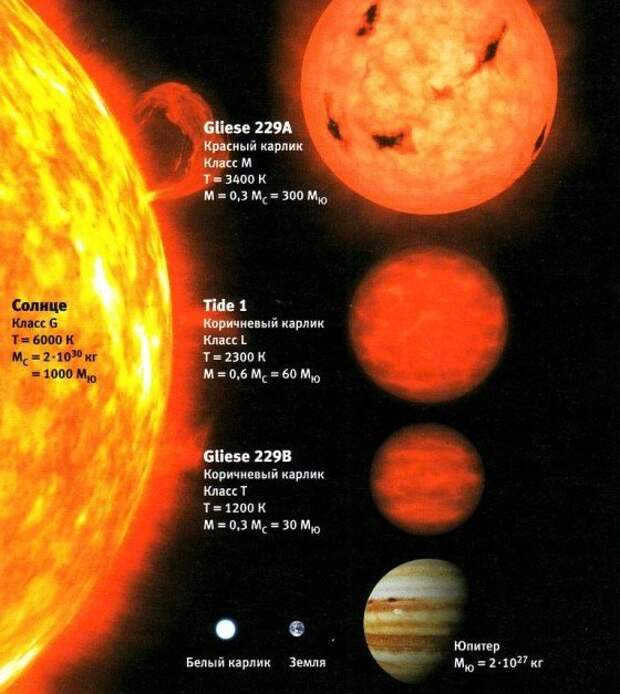
Comparative sizes of red and brown dwarfs.
Red dwarfs are much smaller in size compared to solar dwarfs. The smallest red dwarfs have a radius that is only 11% and a mass that is only 8% of the solar dwarf. This means that the radius of a red dwarf is approximately 150,000 kilometers. While this may seem significant to us, it is actually quite small on a stellar scale. However, when compared to a neutron star, which can have a radius of 10-20 kilometers, a red dwarf appears colossal. Even a white dwarf, which is 10 times smaller than a red dwarf, is still larger in size.
We have discussed the sizes of the smallest stars, but what about the larger ones?
On the upper right-hand side of the Hertzsprung-Russell diagram, we can observe the presence of the largest stars, commonly referred to as hypergiants. These celestial entities can be described as colossal beasts within the stellar realm. Typically, a hypergiant possesses a mass that is 100 to 120 times greater than that of the Sun, accompanied by an immense size that surpasses that of thousands of Suns.
Previously, the UY Shield star held the title for being the largest hypergiant known to humanity. During its maximum expansion phase, this star reaches a size of 1900 times larger than the Sun. However, due to its pulsating nature, the star experiences fluctuations in size. It is estimated that the volume of this colossal entity could accommodate 5 billion stars similar to the Sun, with a diameter measuring approximately 2.4 billion kilometers.

Stevenson 2-18 is of immense size when compared to the Sun.
However, the current champion in terms of size is Stevenson 2-18, a red hypergiant that surpasses even Shields’ UY. It is located in the same constellation. This star measures 2158 times the size of the Sun, spanning a distance of 3 billion kilometers! To put it into perspective, that’s equivalent to 10 astronomical units, or 10 times the distance between the Earth and the Sun. If we were to replace the Sun with this star, its surface would extend beyond the orbit of Saturn. With such a vast surface area, this star emits radiation equivalent to that of 440,000 suns.





